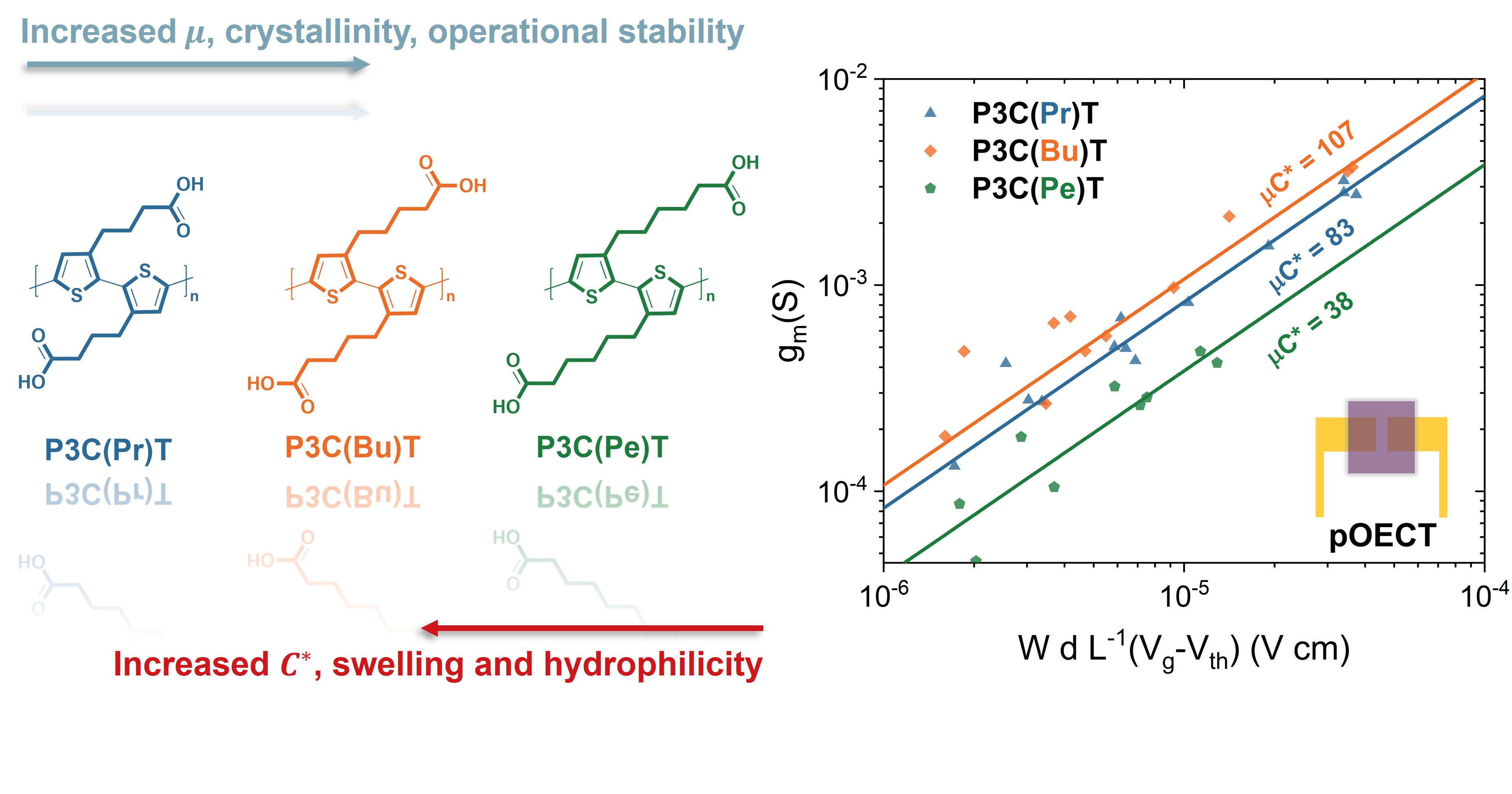The prevailing design rules for organic mixed ionic-electronic conductors (OMIECs) have predominantly revolved around incorporation of the ethylene glycol moiety, with limited exploration of alternative functionalities. However, such emphasis may place constraints on the application space for OMIECs and concurrently present challenges in terms of synthesis and processability. As an emerging alternative OMIEC, we present a series of polythiophenes with hybrid carboxyl-alkyl side chains. Through systematic variation in the alkyl chain length, we comprehensively explore the influence of carboxylic acid functionality and spacer dimensions. Our findings reveal that COOH-functionalization confers the polymers with intrinsic low-swelling properties and water-processibility, yielding solvent resistant conjugated polyelectrolytes while preserving substantial electroactivity in aqueous environments. Leveraging advanced
in situ techniques, such as time-resolved spectroelectrochemistry and Raman spectroscopy, we attain a comprehensive molecular-level understanding of microstructure, ionic-electronic coupling, and operational stability.
By further benchmarking the materials through planar and interdigitated organic electrochemical transistors (OECTs) and comparing with state-of-the-art OMIECs, we highlight the significant potential of the carboxyl-butyl polythiophene (P3C(Bu)T), which exhibits superior electrochemical performance and faster doping kinetics, achieving a record-high OECT performance among conjugated polyelectrolytes ( = 107 4 ). By further comparing the -COOH moiety with ester functionalization using electrochemical quartz crystal microbalance with dissipation monitoring (EQCM-D), we unveiled a distinctive ion transport mechanism, where both cations and anions are involved in the polymer redox process, while pH modulation affects swelling and ion uptake significantly. These findings advance our comprehension of structure-property relationships in conjugated polyelectrolytes, expanding the material landscape for future OMIEC design and development. Further, our work underscores the potential of conjugated polymers featuring alkyl-COOH side chains as a promising avenue for robust OMIEC designs, with the potential to enable facile (bio)chemical functionalization for diverse (bio)sensing applications.


